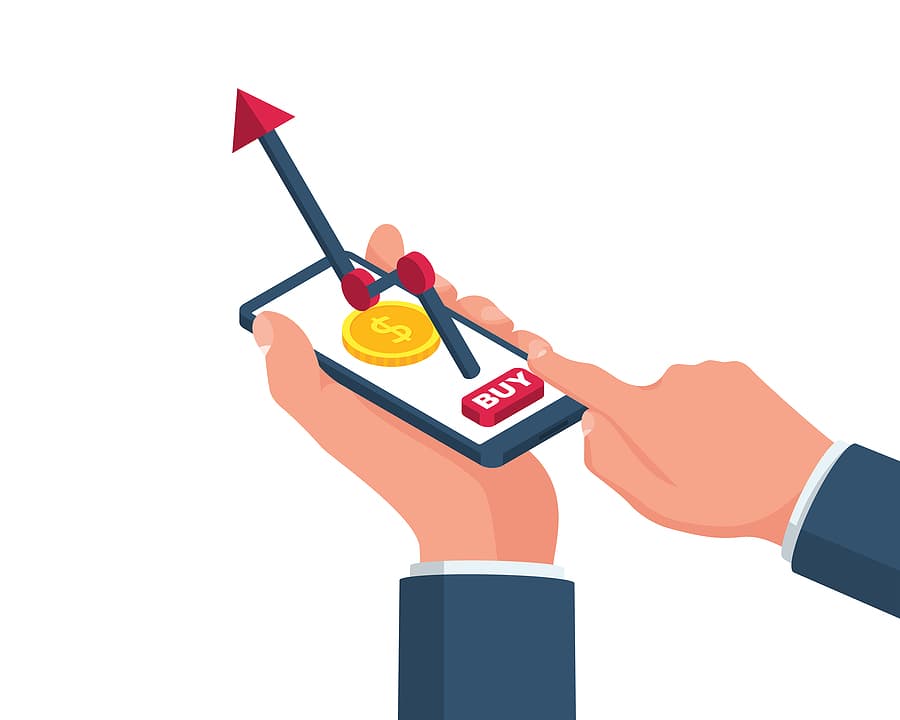Table of Contents
Are you curious how can create your own trading bot?
If the answer is yes, then you are on the right path.
The algorithmic trading (also known as algo trading) market is growing at a rapid speed due to the rising demand for quick, reliable, and effective order execution. According to a J.P. Morgan survey, more than 60% of trade tickets sized over $10 million were executed in March 2020 via an algorithm. Following this trend, the global algo-trading market is expected to reach $18.8 billion by 2024.
Impressive, right?
What is Algorithmic Trading and How do Traders Benefit From It?
Trading algorithm is a computer code that has the ability to generate buy and sell orders in the financial markets according to set rules. Once the current market conditions match any predetermined criteria, trading algorithms can execute a buy or sell order on your behalf – saving you time by eliminating the need to manually scan the markets.
With the help of automated trading software, it is possible to reduce the risk of human error, implement customized strategies and increase the opportunity of instant order execution. For this reason, many professional traders are looking for an experienced trading platform development company to build a platform that implements an automated trading strategy.
Success Roadmap: 5 Steps to Create a Trading Algorithm
Step 1: Create a Trading Platform
The idea of creating a platform is to receive data from various data sources and store it for backtesting. Testing your algorithms with historical data helps to develop the best combination of buy and sell rules.
There are two different approaches:
Using an existing API to build your own platform around it.
Using an existing platform such as Backtrader Python. These platforms are already designed for backtesting and connected to exchanges.
This means that it’s your decision on how to start. Using an existing platform can help you access essential trading tool functionality. However, if you want to make the most out of your trades, you should opt-in for a custom financial software development platform instead. It provides for unmatched flexibility, and customizability of your data and algorithms.
Step 2: Develop and Visualize Your Trading Algorithm Strategy
The development of a strategy is the most important part of a successful trading algorithm. However, as you know, a winning strategy is not something you can find on Google. Its creation requires research, mathematical thinking, and an in-depth understanding of financial markets. Each market has its own rules. So, strategies curated for a stock market can differ from the ones that may perfectly work for forex pairs.
Remember, coding is impossible if the strategy can’t be visualized in a flowchart. This means you need to come up with a rule-based strategy in order to develop an automated trading system with implemented buy and sell orders and price targets based on quantifiable price data.
Step 3: Define Time Frame and Trading Frequency
Time frame is an extremely important indicator for programming and data science. So, it’s not surprising that time frame analysis or multi-time frame comparisons are inseparable components for any successful trading algo strategy.
Although well-coded trading algorithms work independently, monitoring and evaluation are always recommended. This means you should take into consideration your availability when choosing the time frame and trading frequency. While some traders specialize in hft (high-frequency trading), people who can’t dedicate much time to trading during the day may choose long-term trading.
Step 4: Test the Trading Algorithm on Historical Data
When your trading algorithm is coded based on your strategy, it is recommended to avoid trading real money until the trading bot is tested. This means running the algorithm on historical price data. By using a number of variables, you can analyze the performance of the algorithm over thousands of trades. The results of the historical testing phase should be acceptable and result in a thorough risk assessment. If so, you are safe to proceed to test the algorithm in live conditions on a demo account.
Step 5: Connect Algorithm To a Live Demo Trading Account
After the profitability of the trading algo is confirmed, it’s time to trade using a live demo account – also called paper trading. The real market conditions are different as here the robot’s buy and sell orders affect the market. Keep your eyes wide open until it’s verified that the trading algorithm program is working in live conditions.
That’s it.
The Creation Process Of a Trading Bot Is a Bit Longer Than You Imagined, Right?
Well yes, the creation and coding of an algorithmic trading program is a complex process. It requires the combined efforts of people who understand the financial markets, and programming experts. Once you have a rules-based strategy in place, a software development team with talented professionals who have mastered Python or C++ can successfully build your algorithmic trading bot.
Don’t hesitate, develop your own custom trading software today.






